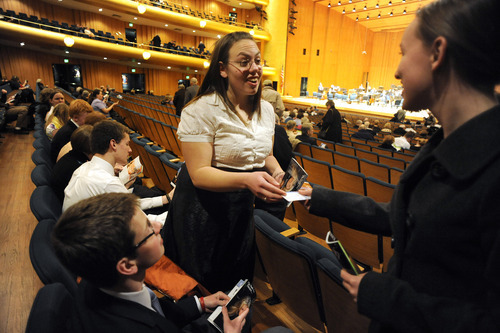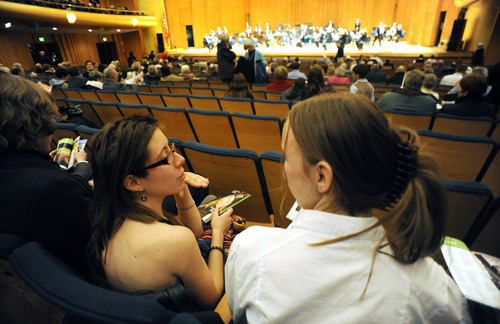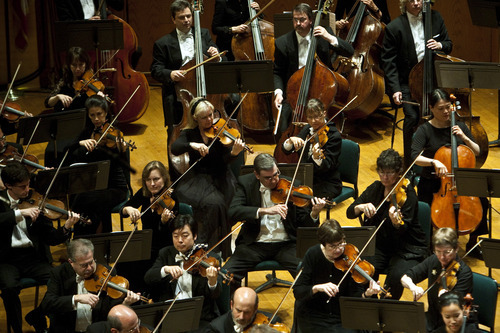This is an archived article that was published on sltrib.com in 2011, and information in the article may be outdated. It is provided only for personal research purposes and may not be reprinted.
Everyone knows it's poor form to answer your phone in the middle of the opera or to unwrap cellophane-wrapped candies in slow motion during a bassoon recital. But what about applauding between movements of a Beethoven symphony or a Mozart piano concerto?
Midperformance applause is one of the few matters of concert etiquette on which there isn't clear consensus. Some music enthusiasts believe it disrupts the composer's carefully constructed sound world; others argue that expecting people to sit in silence until the final downbeat is contrary to the spirit of the music. Still others say it depends on the piece.
It's been less than a century since it became customary to hold applause until the last note of a long piece of music, says Crystal Young-Otterstrom, the Utah Symphony | Utah Opera audience-development consultant and driving force behind the organization's Vivace networking group. Violating this unwritten rule doesn't necessarily betray a lack of sophistication, she said.
"Historically, they used to stop and even give encores [of well-received symphony movements]," Young-Otterstrom says. "Sometimes it really detracts from the beautiful music you just heard, but sometimes it's really deserved." The conclusion of the scherzo movement of Tchaikovsky's Symphony No. 6, for example, seems to demand an emotional release. And it's still virtually de rigueur to applaud individual arias, choruses and other numbers in an opera.
Symphonies, concertos, string quartets and other pieces of concert music typically are divided into movements (most often there are four in a symphony and three in a concerto), so if you aren't sure when it's safe to applaud, follow along in the printed program and count the movements. Sometimes, though, the composer throws you a curve by stringing two or more movements together without a pause. If you're still in doubt, you can wait until the conductor turns around.
Avid concertgoer Jon Kahananui of South Salt Lake, who plays violin and viola in several community-based orchestras, is in the "it depends" camp when it comes to midperformance applause. The hushed conclusion of the first movement of Mahler's "Resurrection" Symphony is one thing, he believes; the end of a concerto movement, which typically culminates in a splashy show of virtuosity by the soloist, is quite another — though he still prefers to "store that energy till the end of the concerto" when he can cheer to his heart's content.
Young-Otterstrom conceded that Utah audiences are notoriously generous with their applause and that "it would probably be good if [a standing ovation] became more special." But she believes people will get a feel for the etiquette as they become more comfortable in the concert hall.
"For regular concertgoers, we know the rules," said Salt Lake City arts blogger Betsy Hijazi. "But the idea is to bring more people, and new people, and you can't make them feel bad because they don't know the rules."
"We have to unwind our panties on that issue," Young-Otterstrom said. "You don't help the symphony by making people feel unwelcome — we need everybody there."
creese@sltrib.com facebook.com/nowsaltlake







